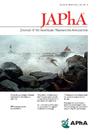Bridging PrEP access gaps: Mapping geospatial accessibility across the United States and leveraging community pharmacies for expansion
IF 2.5
4区 医学
Q3 PHARMACOLOGY & PHARMACY
Journal of the American Pharmacists Association
Pub Date : 2025-03-01
DOI:10.1016/j.japh.2024.102274
引用次数: 0
Abstract
Background
Pre-exposure prophylaxis (PrEP) is key to ending the US HIV epidemic, but uptake remains low. Federal legislation permitting community pharmacists to initiate PrEP nationwide could expand access to PrEP services.
Objectives
This study aimed to evaluate census tract-level geospatial access to PrEP facilities and community pharmacies across the US and characterize geographic areas and populations where community pharmacies could help bridge the gap in care.
Methods
We identified census tracts with limited or no access (“deserts”) to PrEP facilities and community pharmacies in 2022 using 2 primary definitions: 1) a tract with no PrEP facilities or pharmacies within a 30-minute drive of the tract centroid; and 2) a tract with low income and low access (no PrEP facilities or pharmacies within one mile of the centroid for low vehicle access tracts, 2 miles in urban tracts, 10 miles in suburban tracts, 20 miles in rural tracts). Tracts with access were “oases,” and “PrEP desert, pharmacy oasis” tracts represented areas without PrEP facilities where community pharmacies could expand access. We characterized the social determinants of health associated with desert status and conducted sensitivity analyses exploring additional access definitions.
Results
Of the 82,729 census tracts in our analysis, most were classified as dual PrEP and pharmacy oases. We categorized 13.3% as PrEP deserts under the 30-minute definition, and 94.3% of these tracts were pharmacy oases. Under the low income and low access definition, 17.0% of all tracts were PrEP deserts, 78.2% of which were pharmacy oases. PrEP deserts were predominantly located in the Midwest and South and associated with higher poverty, social vulnerability, and uninsurance.
Conclusion
Our analysis confirmed inequitable access to PrEP facilities across the US. Federal recognition of pharmacists as health care providers empowered to initiate PrEP nationwide has the potential to substantially bridge access gaps for underserved communities.
缩小 PrEP 获取差距:绘制全美地理空间可及性地图并利用社区药房进行扩展。
背景:暴露前预防(PrEP)是结束美国艾滋病流行的关键,但接受率仍然很低。允许社区药剂师在全国范围内启动 PrEP 的联邦立法可以扩大 PrEP 服务的可及性:本研究旨在评估全美人口普查区一级的 PrEP 设施和社区药房的地理空间使用情况,并确定社区药房可帮助缩小医疗差距的地理区域和人群的特征:我们使用两个主要定义确定了 2022 年 PrEP 机构和社区药房使用受限或无法使用("荒漠")的人口普查区:1)距离普查区中心点 30 分钟车程内没有 PrEP 机构或药店的普查区;以及 2)低收入且交通不便的普查区(低车速普查区中心点 1 英里内没有 PrEP 机构或药店,城市普查区中心点 2 英里内没有 PrEP 机构或药店,郊区普查区中心点 10 英里内没有 PrEP 机构或药店,农村普查区中心点 20 英里内没有 PrEP 机构或药店)。交通便利的地区是 "绿洲",而 "PrEP 沙漠,药房绿洲 "地区则是没有 PrEP 设施的地区,社区药房可以在这些地区扩大服务范围。我们描述了与沙漠状态相关的健康社会决定因素,并进行了敏感性分析,探讨了更多的获取定义:在我们分析的 82 729 个人口普查区中,大多数被归类为 PrEP 和药房双重绿洲。根据 30 分钟的定义,我们将 13.3% 的地区归类为 PrEP 沙漠,其中 94.3% 的地区为药房绿洲。根据低收入和低获取率的定义,17.0% 的地区属于 PrEP 沙漠,其中 78.2% 属于药房绿洲。PrEP 沙漠主要位于中西部和南部,与较高的贫困率、社会脆弱性和无保险率有关:我们的分析证实了美国各地在使用 PrEP 设施方面存在的不公平现象。联邦承认药剂师是有权在全国范围内启动 PrEP 的医疗服务提供者,这有可能大大缩小医疗服务不足社区在获取服务方面的差距。
本文章由计算机程序翻译,如有差异,请以英文原文为准。
求助全文
约1分钟内获得全文
求助全文
来源期刊
CiteScore
3.30
自引率
14.30%
发文量
336
审稿时长
46 days
期刊介绍:
The Journal of the American Pharmacists Association is the official peer-reviewed journal of the American Pharmacists Association (APhA), providing information on pharmaceutical care, drug therapy, diseases and other health issues, trends in pharmacy practice and therapeutics, informed opinion, and original research. JAPhA publishes original research, reviews, experiences, and opinion articles that link science to contemporary pharmacy practice to improve patient care.

 求助内容:
求助内容: 应助结果提醒方式:
应助结果提醒方式:


